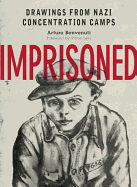
In 1979, at the age of 56, Italian writer and artist Arturo Benvenuti and his wife drove across Europe in a motor home searching for former prisoners of Nazi concentration camps. He saw the journey as a secular Via Crucis--a pilgrimage in which the Stations of the Cross were Auschwitz, Terezín, Mauthausen and Buchenwald. He met with dozens of survivors, many of whom shared not only their stories but also the artwork they created in the camp.
Benvenuti originally published those drawings in 1983, under the title KZ, the German acronym for Konzentrationslager, or concentration camp. He chose drawings from people who had a direct experience with the camps; most were internees during their time in the camps, though a few were soldiers who entered the camp as liberators.
The drawings vary in skill, but not in power. Some are the work of professional artists. Most are the work of what Benvenuti describes as "bonafide 'naifs.' " A few were made by children. Primo Levi summed up their effect in a foreword, saying that words were insufficient to describe the horrors of the camps but these drawings "say what the word is not able to."
The new edition, titled Imprisoned: Drawings from Nazi Concentration Camps, adds several poems by Benvenuti and explanatory essays but leaves the arrangement of the drawings untouched and uninterpreted. As Benvenuti intended, the collection is both a work of art and an act of testimony. --Pamela Toler, blogging at History in the Margins

